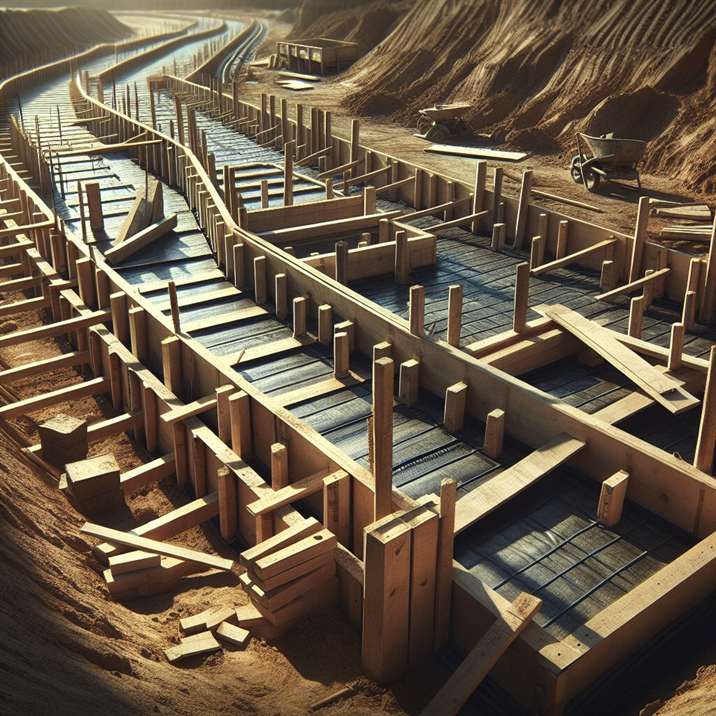Best Practices for Using Stakes and Lath in Construction
Introduction
Have you ever wondered how construction professionals achieve such remarkable precision in their projects? The secret often lies in the humble tools of stakes and lath. These seemingly simple elements are, in fact, pivotal in laying the groundwork for successful construction endeavors. With the construction industry evolving rapidly, understanding the best practices for using stakes and lath is more important than ever.
In recent years, there has been a significant shift towards utilizing innovative materials and techniques in construction. Studies reveal that proper implementation of stakes and lath can enhance project efficiency, accuracy, and overall quality. This article will explore the best practices for using stakes and lath in construction, providing you with informative insights and actionable advice.
We’ll delve into what stakes and lath are, their historical context, and the vital role they play in modern construction practices. Further, we will discuss the mechanics of how they work, explore technological advancements in this field, and highlight real-world applications. Lastly, we will examine the benefits and drawbacks of using stakes and lath, ensuring you have a well-rounded understanding of these essential tools.
What is Best Practices for Using Stakes and Lath in Construction?
Definition
To begin, let’s clarify what we mean by stakes and lath in the context of construction:
- Stakes are pointed wooden or metal rods used to mark boundaries, guide construction lines, or support temporary structures. They provide a physical reference point for measurements and alignments.
- Lath, on the other hand, refers to thin strips of material (usually wood) used to support plaster or other materials in construction. In landscaping and fencing, lath can also define areas and create frameworks for plants and structures.
Historical Context
The use of stakes and lath in construction is not a modern invention. Historically, these tools have been integral to construction practices across different cultures. Ancient Egyptians used wooden stakes to outline their monuments, while lath was employed in medieval Europe for plastering walls. The evolution of these materials reflects advances in technology and construction methods.
Notably, the introduction of industrial manufacturing processes in the 19th century increased the availability and standardization of stakes and lath, making them indispensable in modern construction. Today, diverse materials, including eco-friendly options, are available to meet various project needs.
The Importance of Best Practices for Using Stakes and Lath in Construction
Understanding and implementing best practices for using stakes and lath is crucial for several reasons:
- Accuracy: Properly placed stakes ensure that measurements are accurate, which is vital for successful project outcomes.
- Efficiency: Using lath effectively can streamline construction processes, reducing time and labor costs.
- Durability: Selecting the right materials and methods for stakes and lath enhances the longevity of structures and reduces maintenance.
Best Practices for Using Stakes and Lath in Construction in the Context of Civil Engineering
In civil engineering, the significance of stakes and lath cannot be overstated. They are fundamental in site planning, grading, and layout. Properly executed, they ensure that projects stay within designated boundaries and adhere to design specifications.
Key Players or Contributors
Several organizations and manufacturers are innovating in the field of stakes and lath. Companies focusing on sustainable materials and advanced manufacturing techniques are particularly influential in shaping future best practices. For example, Sustainable Eco-Friendly Wood Stakes are increasingly popular among modern builders.

How Does Best Practices for Using Stakes and Lath in Construction Work?
The Mechanics of Best Practices for Using Stakes and Lath in Construction
Using stakes and lath effectively involves several steps:
- Planning: Before beginning any installation, a thorough plan must be established. This includes determining the layout, boundaries, and any elevation changes.
- Placement of Stakes: Using a mallet, drive stakes into the ground at strategic points to outline the construction area. Ensure they are securely in place and visible.
- Installation of Lath: Attach the lath to the stakes to create a framework. This is particularly useful for guiding the placement of materials like concrete or plaster.
- Checking Alignment: Use a level and measuring tape to confirm that stakes and lath are positioned correctly. Adjust as necessary to maintain accuracy.
- Final Checks: Once everything is in place, conduct a final review to ensure that all elements conform to the design specifications.
Technological Foundations of Best Practices for Using Stakes and Lath in Construction
Advancements in technology have significantly improved the efficiency and effectiveness of using stakes and lath. Tools like laser levels and GPS technology provide precise measurements, while software applications assist in planning layouts.
For instance, tools designed for construction alignment have revolutionized how builders approach site organization. These technologies help reduce human error and enhance overall accuracy in project execution.
Real-World Applications of Best Practices for Using Stakes and Lath in Construction
The application of stakes and lath can be seen in various construction scenarios:
- Residential Projects: Home builders use stakes to outline property boundaries and ensure proper alignment for foundations.
- Landscaping: In landscaping, lath serves as a framework for planting and irrigation systems, ensuring gardens are both functional and aesthetically pleasing.
- Road Construction: Civil engineers utilize stakes to mark out road alignments and ensure compliance with design specifications.
Case Studies/Examples of Best Practices for Using Stakes and Lath in Construction in Action
One notable example is a large-scale residential development where the builders faced challenges with uneven terrain. By following best practices for Site Grading Stakes on Rough Terrain, the team achieved remarkable accuracy, leading to reduced material waste and construction delays.
Benefits and Drawbacks of Best Practices for Using Stakes and Lath in Construction
Benefits
- Cost-Effectiveness: Utilizing affordable stakes and lath can keep project costs manageable without sacrificing quality. For more on budget-friendly options, refer to our guide on Budget-friendly Construction Stakes & Lath.
- Increased Precision: Properly aligned stakes and lath lead to better accuracy in measurements, reducing the need for costly corrections later in the project.
- Versatility: Stakes and lath can be used in various applications, from simple garden layouts to complex civil engineering projects.
Drawbacks
- Weather Sensitivity: Wooden stakes can be susceptible to rot and damage from weather conditions, potentially impacting their effectiveness.
- Labor-Intensive Setup: Setting up stakes and lath can be labor-intensive, especially on larger projects, requiring careful planning and execution.
The Benefits of Best Practices for Using Stakes and Lath in Construction
Implementing best practices for using stakes and lath brings numerous advantages, including:
- Enhanced Project Accuracy: Consistent use of stakes and lath helps maintain precise dimensions throughout the construction process.
- Streamlined Workflow: By effectively using these tools, construction teams can improve workflow efficiency, leading to faster project completion times.
- Sustainability: Choosing eco-friendly materials contributes to sustainable building practices, appealing to environmentally conscious clients.
For a more in-depth exploration of the advantages of using stakes and lath, check out our article on the Advantages of Construction Stakes and Lath.
Conclusion
Understanding the best practices for using stakes and lath is essential for anyone involved in construction, from seasoned professionals to DIY enthusiasts. These tools are not just simple markers; they are foundational elements that can dictate the success of a construction project.
By following the guidelines outlined in this article, you can enhance your project’s accuracy, efficiency, and sustainability. As the construction industry continues to evolve, embracing these best practices will ensure that you are well-equipped to meet future challenges.
With the right knowledge and tools at your disposal, achieving remarkable precision in your construction endeavors is well within your reach. Whether you’re working on a small garden project or a large-scale development, the effective use of stakes and lath can significantly impact your success.
Resource Links:
1. Family Handyman – A guide on how to effectively use stakes and lath for creating concrete forms.
2. HGTV – Instructions on utilizing stakes and lath in landscaping projects to ensure proper layout and support.
3. This Old House – An overview of using lath and stakes for various construction and outdoor projects, emphasizing stability and alignment.

